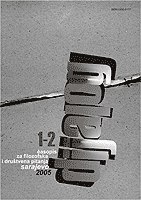KOLIKO JE “KINESKI” BIO KANT?
HOW “CHINESE” WAS KANT?
Author(s): Steve PalmquistSubject(s): Philosophy
Published by: Akademija Nauka i Umjetnosti Bosne i Hercegovine
Summary/Abstract: This paper is not the place for a discussion of the many forms this dialogue has taken. But further discussions of the key issues concerning Kant can be found in numerous books and articles, such as: Wing-tsit Chan (ed.). Chu Hsi and Neo-Confucianism (Honololu: University of Hawaii Press, 1986), especially Li Zehou’s chapter, “Some Thoughts on Ming-Qing Neo-Confucianism,” pp. 551-69; Herbert Fingarette, “Following the ‘One Thread’ of the Analects,” Journal of the American Academy of Religion Thematic Issue XLVI:3” (September 1979), especially pp.379-83, 395; and Kirill O Thompson, “Li and Yi as immanent: Chu Hsi’s Thought in Practical Perspective,” Philosophy East & West 38.1 (January 1988), pp. 30-46. In most cases, these and other comparative studies focus primarily on the task of showing the extent to which the Chinese (especially Neo-Confucian) tradition can match up to the Western (especially Kantian) tradition (see, e.g., Moore, pp. 86, 321, and Li, pp. 551, 553-4, 557-8). In A Daoist Theory of Chinese Thought, Hansen claims the only true similarity between Kant and Confucius is that both reject utilitarianism (p. 389); he takes the novel approach of emphasizing their differences (pp. 123, 165-6, 353, 415) and suggests some qualified similarities between Kant and Daoism (pp. 284, 298). In contrast to both of these approaches, Dr. Palmquist here examines the extent to which Kant matches up to Chinese culture and its philosophical tradition.
Journal: Dijalog - Časopis za filozofiju i društvenu teoriju
- Issue Year: 2005
- Issue No: 01+02
- Page Range: 190-207
- Page Count: 18
- Language: Bosnian

